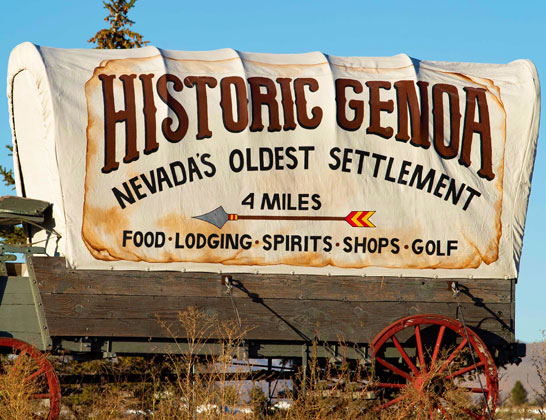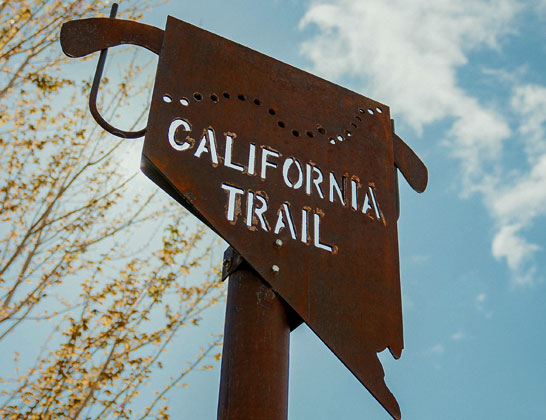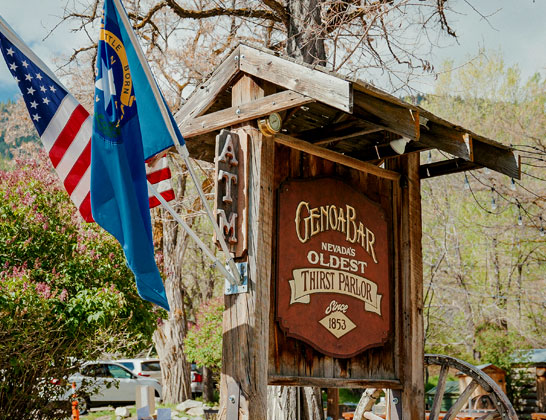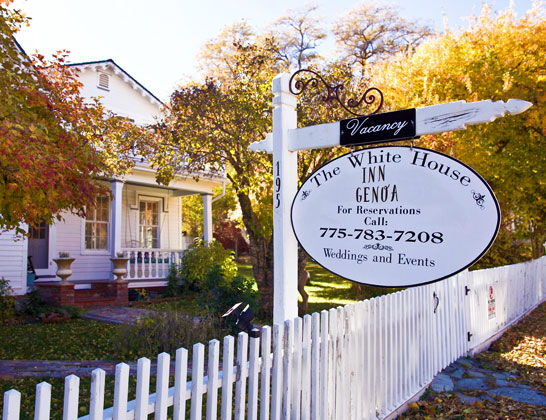Genoa, Nevada
A thriving historical settlement, visiting quaint Genoa today is a throwback to old-fashioned western culture. While times have changed in Nevada’s oldest settlement, the spirit of volunteerism sure hasn’t.
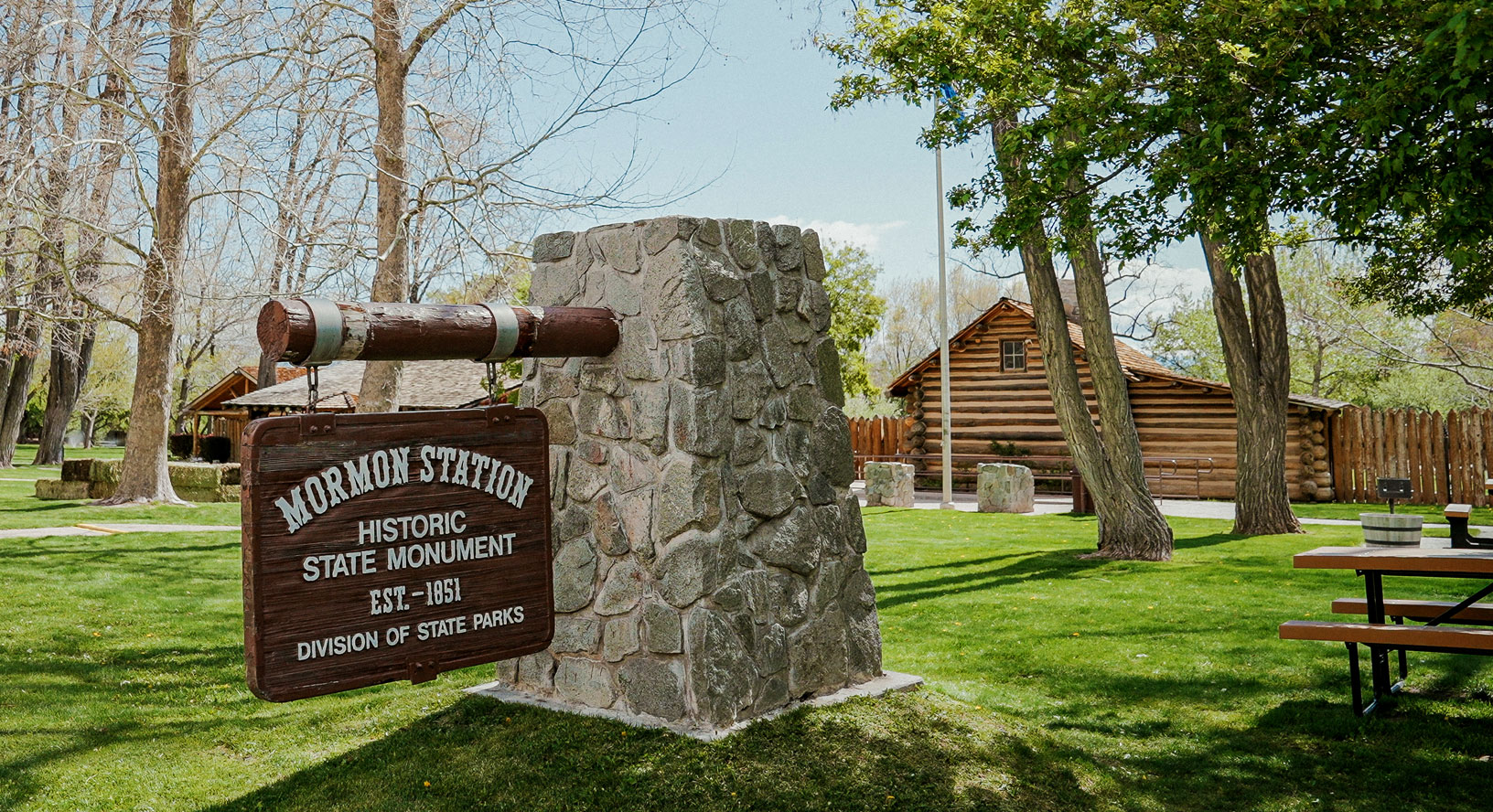
Birth of Genoa
Founded in the Spring of 1851, Genoa is Nevada’s first settlement. Sitting on the western edge of the Carson Valley, along the Overland Emigrant Trail, the town was settled by John Reese and pioneers from the Utah Territory. Historically, the land started as a lean-to named Mormon Station. In June 1850, settlers built a roofless log enclosure and corral near a stream as the town trading post. Here emigrants could obtain goods and supplies establishing Mormon Station as a permanent trading post. Traffic was getting heavier and ranching communities were expanding around the area. The Genoa Post Office, blacksmith shop, and courthouse were built. Orson Hyde changed the name of the settlement to Genoa in 1855, after the Italian city.
The original fort, courthouse, and much of Genoa was destroyed by a fire in 1910. A replica of the fort was rebuilt in 1947 and can be visited today as a part of Mormon Station State Park.
The courthouse fire prompted the Douglas County seat to be moved to the town of Minden during the 1915 legislative session. Visit the Town of Genoa website to learn more about the history.

Community Values
What started as a way to fund a town street light carries the sweetest 100-year tradition. Following World War I in 1919 the Town of Genoa had no money to purchase street lights, but residents couldn’t bear to keep living in the dark.
At this time, the town’s economic health was declining so creative ideas on how to fund this venture were thrown around. Lillian Virgin Finnegan, a member of the suffragette movement, remembered a cruise dance where candy was served to the guest on silver trays as an extra treat. Borrowing that idea, Lillian together with the women of Genoa went about preparing this type of event. A raving success, the Candy Dance allowed for the purchase of 10 streetlights to be installed in the town. Seven of the original lights still burn bright today.
In light of the 100th year celebration, in August 2019 the town of Genoa revealed a seven-foot bronze statue of Lillian Virgin Finnegan, the Candy Dance originator. One of the town’s first street lights illuminates her in dedication to all the countless volunteers who make this annual event possible.
Lillian left a legacy of passion and connection that fostered a greater sense of community. The Candy Dance volunteers have been extending their roots of service to provide direct help to the Town of Genoa that Lillian would be proud to have started. In the most positive light, the spirit of volunteerism is alive and well in the current residents.
Townspeople gather together every year to make the candy that is sold at this event, nearly two-tons worth! This spirit teaches us to look beyond our self interests and understand the role we play in our community today and for generations to come.
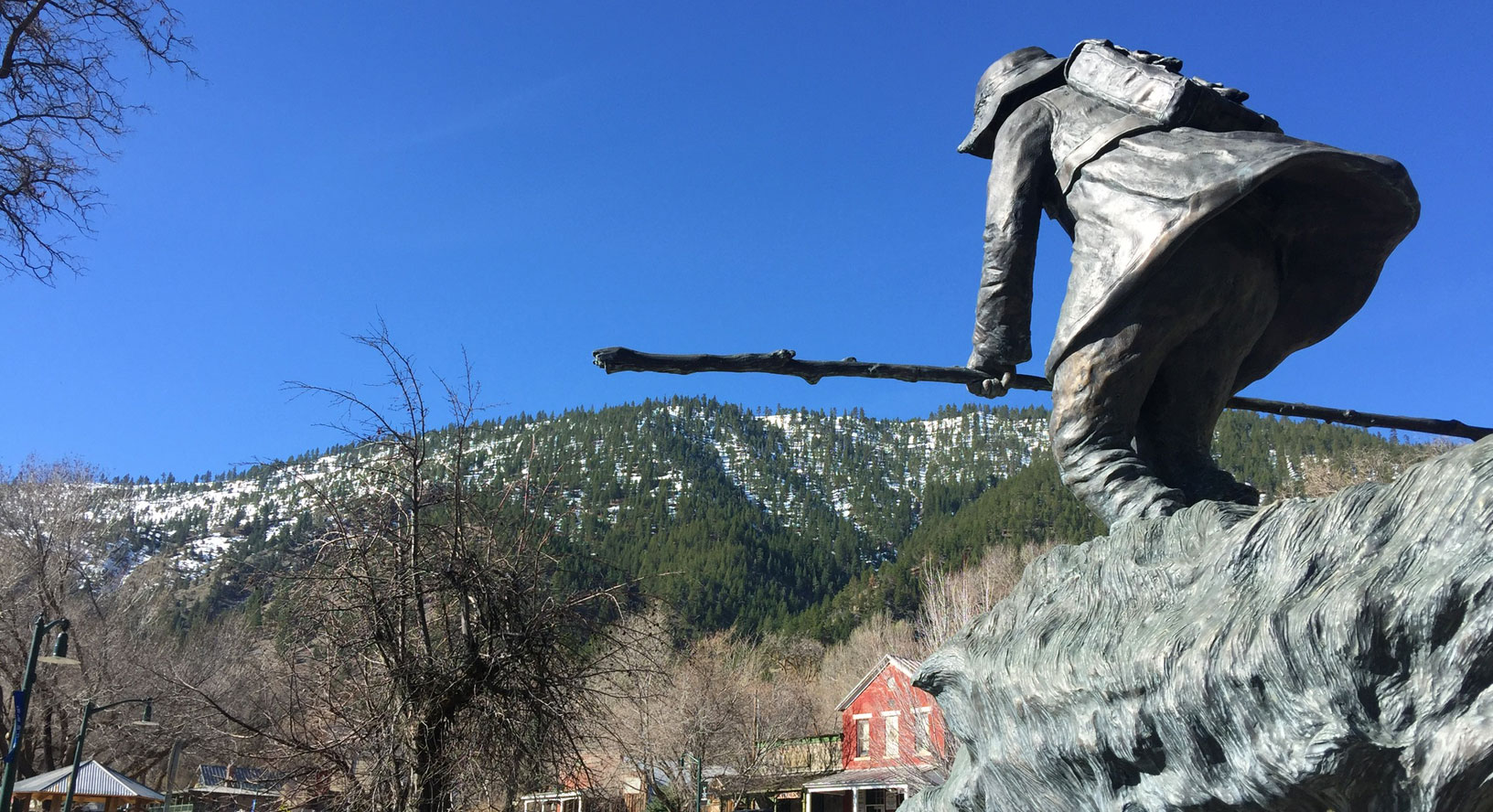
People of Genoa
Eliza Mott | Recognizing the need for education in 1854, Eliza Mott opened up her kitchen as a school, making her Nevada’s first school teacher. Eliza kept up her housekeeping schedule of feeding livestock, milking cows, cooking breakfast for the family and preparing lunches for her students all before the school day started. Later, the school that started in her house was moved to a one-room building and named the Mottsville School.
Mark Twain | Following the Pony Express Ride from East to West in the 1860s a man came out West as Samuel Langhorne Clemens, and later left known to the world as Mark Twain. A contributing writer for the Genoa newspaper, The Territorial Enterprise, Twain found himself in Genoa often and a frequent visitor to the natural geothermal hot springs at David Walley’s Resort. Stopping in one spring when he was suffering from sickness he made the claim; a touch from the geothermal heated mineral baths and he became “relieved of pain and gained in spirit.”
Lillian Virgin Finnegan | A member of the suffragette movement, Lillian Virgin Finnegan is remembered as the Genoa Candy Dance originator. To commemorate the centennial Candy Dance, this past August, Genoa unveiled a seven-foot bronze statue of her. One of the town’s original street lights, paid for by the first Candy Dance, illuminate the statue in dedication to all the dedicated “Candy Makers” who make the candy sold at this event today.
Snowshoe Thompson | He had no idea by accepting a newspaper ad asking for a mail carrier his nickname would become a legendary one. John A. Thompson set out on his first mail run in January 1856. Thompson had a personally devastating experience with mail deprivation, and from 1856-1876 he made 90-mile treks across the Sierra Nevada through snow and blizzards to deliver mail to people living in isolation from the mail route. His gravesite can be visited in Genoa – his name somehow misspelled yet a true legacy. Visit Carson Valley Come see why we are easy to find, and hard to forget. Begin planning your trip here.
Annual Events
Genoa Western Heritage Celebration | Celebrating the rich history from Native Americans to the early pioneer settlers, this three-day festival showcases and honors Genoa’s western roots.
Annual Candy Dance and Faire every September, “Candy Makers” volunteer to make the 4,000 pounds of taffy, brittle, fudge and more sold at the annual Candy Dance town fundraiser.
Fun Facts
- Nevada’s first newspaper The Territorial Enterprise was printed in Genoa
- Filming location for the movie ‘Misery’
- The Genoa Bar is Nevada’s Oldest Thirst Parlor, established in 1853




